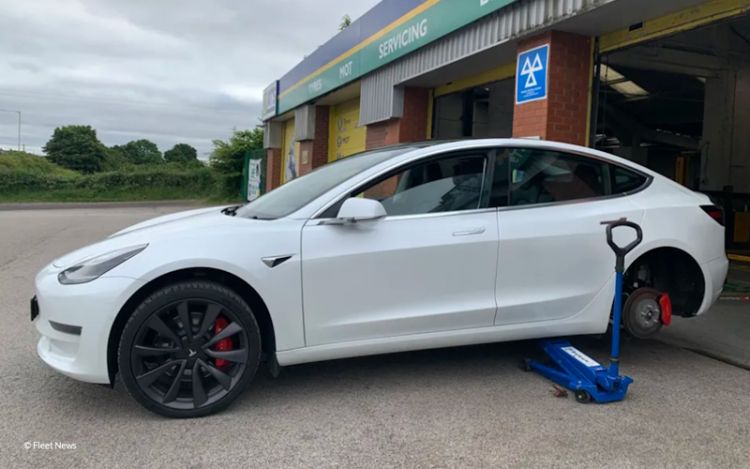While electric vehicles (EVs) generally require less maintenance due to fewer moving parts and the absence of oil changes, tire wear is a crucial factor that often goes unnoticed.

The appeal of electric vehicles lies in their promise of reduced maintenance costs. Fewer moving parts translate to fewer components that can wear out or malfunction; the absence of oil changes further contributes to these savings. The shift to electric vehicles (EVs) is changing the automotive industry, offering numerous benefits, from reduced emissions to lower running costs. However, fleets transitioning to EVs should be prepared for a change in the balance of service, maintenance, and repair (SMR) expenses. While EVs generally require less maintenance, as already mentioned, tire wear is a crucial factor that often goes unnoticed.
Tire wear on EVs
The key to understanding this change in SMR spending lies in the unique characteristics of electric vehicles. Most EVs, especially in the corporate sector, are heavy SUVs, and the weight of a large battery further adds to their mass. It's not just the added bulk; regenerative braking, a feature common in electric vehicles, has a role in shortening the tire replacement cycle. These combined factors contribute to an accelerated rate of tire wear in an EV fleet.
However, not only do the vehicle's features and weight affect tire wear, but Driver behavior also plays a crucial role. For many drivers new to EVs, the temptation of their exceptional acceleration is hard to resist, especially during the initial phase of getting familiar with the vehicle. This appeal is enhanced by the fact that they are indeed faster than vehicles powered by internal combustion engines (ICE); due to the simplicity of electric motors, EVs can provide maximum torque (the force that drives the vehicle forward) from zero kilometers, resulting in immediate acceleration. For buyers, this often results in accelerated driving, which can be fun but harsh on the tires and safety.
Strategies for mitigating tire wear in EV Fleets
- Encourage drivers to adopt safe driving practices from the start to avoid unnecessary tire stress;
- Implement training programs that familiarize drivers with EV technology and different driving behaviors compared to traditional internal combustion engine (ICE) vehicles;
- Explore specific tire options for EVs designed to support fleet requirements;
- Consider purchasing lighter models of EVs rather than heavier SUV-style models;
- Closely monitor tire replacement and take preventive measures if excessive wear persists.
Understanding the impact of tire wear and taking proactive measures can help fleets transition smoothly to electric vehicles while effectively managing maintenance costs. As we have seen above, it will not only be necessary for fleet managers to find better solutions in terms of maintenance management but also to improve their drivers' driving skills and provide detailed information on EV usage right from the initial stage when EVs are acquired for the fleet.
Do you have electric vehicles in your fleet and require assistance managing costs effectively? Contact a member of our team today.
Source:
Fleet News
Wallbox
- Frotcom
- EVs
- Electric vehicles
- EV fleets
- Electric Energy
- Tire wear
- Increased maintenance costs
- EV efficiency
- EV range
- Fleet managers
- Strategies for mitigating tire wear
- EV tires

